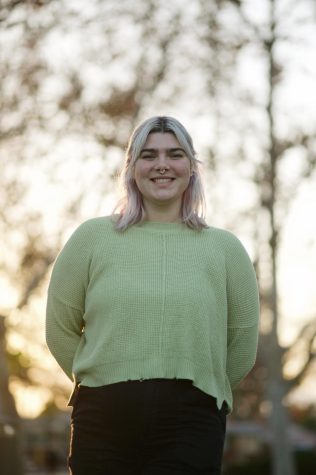In the world of social media, users post content displaying their best selves. It is a digital escape for people to view each other’s profiles and connect, but unfortunately, it can also lead to comparison. With celebrities and influencers editing their bodies and showing off their skin, body comparison and negative body image are inevitable. Negative body image includes disliking one’s physical appearance, which can lead to low self-esteem and mental disorders.
UNREALISTIC BEAUTY STANDARDS
Beauty standards existed before social media, but the new establishment of filters and photo-editing apps allow teens and young adults to create an ideal version of themselves, aligning with unrealistic beauty expectations. These posts distort the reality of the human body and drive viewers to aspire to conform to an impossible beauty standard.
Even in the professional world of media, images encourage the illusion of “the perfect body.” Vogue model Cameron Russel told Verily Magazine that photos of her in magazines are not really her, but rather constructions of an ideal version of her. It is no secret that many celebrities and influencers have been exposed for editing their bodies for social media.
However, teens and young adults still face the ever-mounting pressure to fit these standards. BBC Future reports that women specifically tend to compare themselves with celebrities and peers on social media. Famous and beautiful people hating their bodies causes their admirers to respond by hating their bodies even more.
STRUGGLING WITH BODY IMAGE
Researchers found that 80 percent of women and 34 percent of men experience negative body image. Those who are unhappy with their looks often experience low self-esteem, depression and, in some cases, eating disorders. The rampant use of social media unlocked an increase in these symptoms. According to The New York Times, teenagers admit that social media negatively affects their body image.
Whether it is an actress in a bikini or a fitness model lifting weights, men and women inevitably compare themselves to impractical standards. Viewing enviable posts, alongside increasing societal beauty pressures, harms mental health. Social media plays a huge role in how negative body image plagues the minds of teens and young adults.
BODY POSITIVITY
In the attempt to cure negative body image, the body positivity movement actively pushes against unrealistic beauty standards. They aim to end the harmful consequences of negative body image by encouraging the portrayal of realistic beauty standards in the media.
“The body positivity movement is the type of phenomenon that is intriguing to observe from a sociological perspective,” senior sociology major Amelia Schuhler said. “Social theorist Emile Durkheim theorized that society is kept together by something called ‘collective consciousness,’ that is made up of beliefs and morals that are present to a group of people. The body positivity movement is an example of the collective consciousness of our society shifting and evolving to account for new ideas developing in the social sphere.”
Many people have been hesitant to support the movement in the misconception that it intentionally contributes to physically unhealthy lifestyles. According to Forbes, the body positivity movement encourages inclusion, not obesity.
“Personally, I think the movement is fascinating for the way that people have responded to it,” Schuhler said. “Criticism of the movement is largely from people who are rooted in the collective consciousness surrounding body image and health. Everything that happens in society at a large scale has a systemic structure that needs much more work to change than the minds of individuals. That says something about how compelling the narrative put forward by the body positivity movement must be: it is affecting systemic change, and that is monumental.”
The inclusion of diverse bodies in media allows viewers to feel comfortable with their own bodies, especially when posting their own content. If people see bodies like theirs in campaigns, magazines, movies, and TV shows, they will accept their bodies to be a new standard of beauty. Therefore, breaking the unrealistic beauty standards of social media by popularizing different body types will produce more positive body image in teens and young adults.












